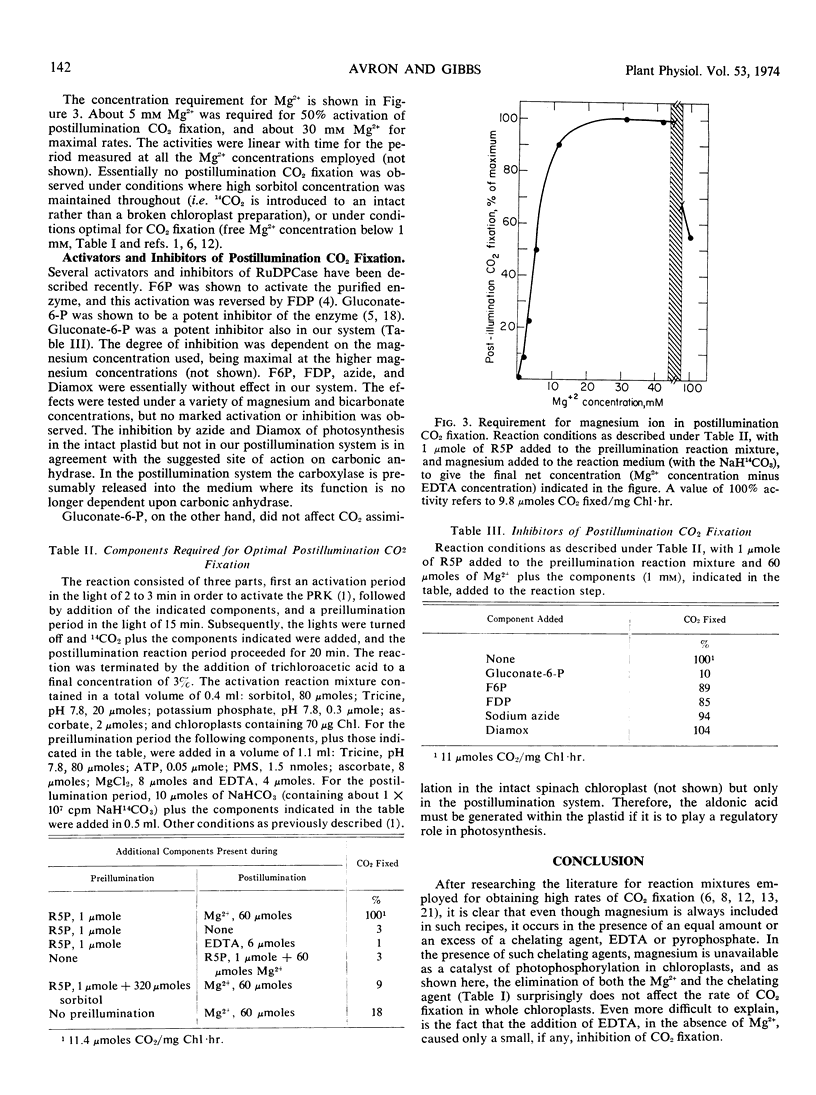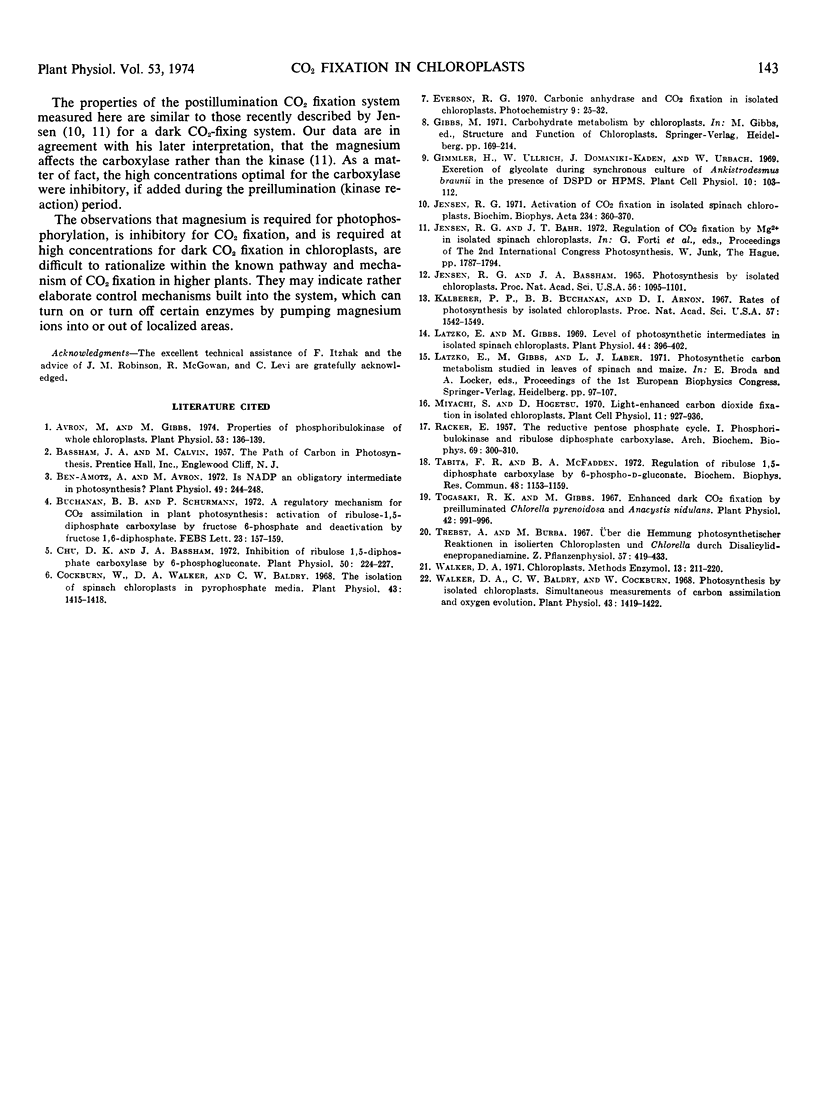Abstract
Factors affecting CO2 fixation in the spinach (Spinacia oleracea) chloroplast were investigated. Free magnesium ions are shown to be highly inhibitory for photosynthetic CO2 fixation in isolated intact spinach chloroplasts. The pH optimum for CO2 fixation is about 8.5 but is dependent upon the reaction medium. Conditions are defined under which chloroplasts illuminated in the absence of CO2 accumulate ribulose 1,5-diphosphate, and fix CO2 in a subsequent dark period when high magnesium ion concentrations are provided. The regulation of photosynthetic CO2 assimilation by these factors is discussed.
Full text
PDF



Selected References
These references are in PubMed. This may not be the complete list of references from this article.
- Avron M., Gibbs M. Properties of phosphoribulokinase of whole chloroplasts. Plant Physiol. 1974 Feb;53(2):136–139. doi: 10.1104/pp.53.2.136. [DOI] [PMC free article] [PubMed] [Google Scholar]
- Buchanan B. B., Schürmann P. A regulatory mechanism for CO 2 assimilation in plant photosynthesis: activation of ribulose-1,5-diphosphate carboxylase by fructose 6-phosphate and deactivation by fructose 1,6-diphosphate. FEBS Lett. 1972 Jun 15;23(2):157–159. doi: 10.1016/0014-5793(72)80329-6. [DOI] [PubMed] [Google Scholar]
- Chu D. K., Bassham J. A. Inhibition of ribulose 1,5-diphosphate carboxylase by 6-phosphogluconate. Plant Physiol. 1972 Aug;50(2):224–227. doi: 10.1104/pp.50.2.224. [DOI] [PMC free article] [PubMed] [Google Scholar]
- Cockburn W., Walker D. A., Baldry C. W. The isolation of spinach chloroplasts in pyrophosphate media. Plant Physiol. 1968 Sep;43(9):1415–1418. doi: 10.1104/pp.43.9.1415. [DOI] [PMC free article] [PubMed] [Google Scholar]
- Jensen R. G. Activation of CO 2 fixation in isolated spinach chloroplasts. Biochim Biophys Acta. 1971 Jun 15;234(3):360–370. doi: 10.1016/0005-2728(71)90203-9. [DOI] [PubMed] [Google Scholar]
- Jensen R. G., Bassham J. A. Photosynthesis by isolated chloroplasts. Proc Natl Acad Sci U S A. 1966 Oct;56(4):1095–1101. doi: 10.1073/pnas.56.4.1095. [DOI] [PMC free article] [PubMed] [Google Scholar]
- Kalberer P. P., Buchanan B. B., Arnon D. I. Rates of photosynthesis by isolated chloroplasts. Proc Natl Acad Sci U S A. 1967 Jun;57(6):1542–1549. doi: 10.1073/pnas.57.6.1542. [DOI] [PMC free article] [PubMed] [Google Scholar]
- Latzko E., Gibbs M. Level of photosynthetic intermediates in isolated spinach chloroplasts. Plant Physiol. 1969 Mar;44(3):396–402. doi: 10.1104/pp.44.3.396. [DOI] [PMC free article] [PubMed] [Google Scholar]
- RACKER E. The reductive pentose phosphate cycle. I. Phosphoribulokinase and ribulose diphosphate carboxylase. Arch Biochem Biophys. 1957 Jul;69:300–310. doi: 10.1016/0003-9861(57)90496-4. [DOI] [PubMed] [Google Scholar]
- Tabita F. R., McFadden B. A. Regulation of ribulose-1,5-diphosphate carboxylase by 6-phospho-D-gluconate. Biochem Biophys Res Commun. 1972 Sep 5;48(5):1153–1159. doi: 10.1016/0006-291x(72)90831-5. [DOI] [PubMed] [Google Scholar]
- Togasaki R. K., Gibbs M. Enhanced Dark CO(2) Fixation by Preilluminated Chlorella pyrenoidosa and Anacystis nidulans. Plant Physiol. 1967 Jul;42(7):991–996. doi: 10.1104/pp.42.7.991. [DOI] [PMC free article] [PubMed] [Google Scholar]


